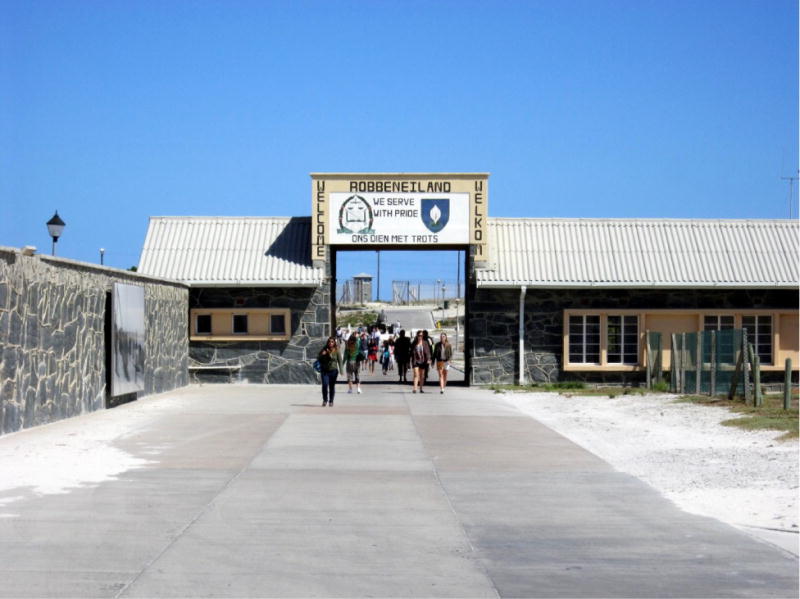Abstract
The 12th International symposium of the Scientific Committee on Neurotoxicology and Psychophysiology, International Commission on Occupational Health was held in Cape Town, South Africa on March 24 – 27, 2013. Reflecting the meeting aiming to build greater focus on challenges facing working populations and communities in developing countries, the Symposium theme was Neurotoxicology and Development: Human, Environmental and Social Impacts. A total of 23 countries were represented with strong participation from 5 African countries. In addition to the more traditional topics of these Symposia, like metal, solvents and pesticides neurotoxicity, the conference embraced several new themes including affective disorders arising from chemical exposure, neurodevelopmental impacts in early life and novel approaches to genetic and epigenetic biomarkers for the assessment of neurotoxic impact. The theme of the conference prompted extensive discussions, which have laid the basis for a number of new directions for research, advocacy and capacity building to prevent and manage chemical neurotoxicity in workplace and community settings across the globe.
Keywords: neurobehavioral toxicology, occupational and environmental health, social and global impact
Neurobehavioral methods were firstly applied to occupationally exposed populations in the 1960s and have developed considerably in the subsequent decades. At least one third of chemical substances show neurotoxic properties (Lucchini et al., 2005) and the workplace Threshold Limit Values for 189 substances out of 693 (27%) have been set based on neurotoxicity data by the American Conference of Governmental Industrial Hygienists (ACGIH, 2014). More than 200 chemical are known neurotoxicants for humans and the list keeps increasing (Grandjean and Landrigan, 2014). In addition to workers exposed to solvents, metals, anesthetic gases and pesticides, neuropsychological assessment has focused more recently also on early life (Rohlman et al., 2008) and lifetime exposure (Lucchini and Zimmerman, 2009). The International Symposium of the ICOH Scientific Committee on Neurotoxicology and Psychophysiology (SCNP) has a long tradition of high quality meetings held in many parts of the world, with a special commitment to the location in the Developing World (Anger and Boyes, 2012). In March 2013, the ICOH SCNP held its 12th Symposium in Cape Town, South Africa that was its first meeting in sub-Saharan Africa. Quite appropriately for a global meeting aiming to build greater focus on challenges facing working populations and communities in developing countries, the Symposium theme was Neurotoxicology and Development: Human, Environmental and Social Impacts.
Two preconference workshops were held, the first led by Dr. Leslie London on ethical issues in occupational health practice as part of a process of input by an Africa workgroup to revisions of the ICOH Ethical Code (London et al., 2014). The workshop deliberations clarified a series of key ethical challenges for occupational health practitioners specific to the African context and came up with a series of high-level recommendations for ethical codes to better recognize the specific social, economic and cultural factors to ensure international ethical codes speak directly to local context (London et al, 2014). The second workshop led by Dr. Kent Anger reviewed progress on the WHO Neurobehavioral core test battery (NCTB) and is reported in more detail in this edition. Although the WHO NCRB was appropriately recognized as a kind of ‘gold standard’ when it was developed, and widely used in subsequent decades mainly for reasons of comparability, the workshop recognized that the value of a static set of tests, often chosen with little understanding of the domains being explored, may be less desirable given what has been learnt about neurobehavioral performance in relation to chemical exposures since the WHO NCTB was launched in 1984. The workshop identified a number of key steps to improving the use of neurobehavioral tests in occupational and environmental epidemiological studies, eloquently outlined by Anger in this edition (Anger, 2014), which the workshop participants will take forward in providing evidence-based guidance for the field of neurobehavioral testing amongst adults exposed to chemical neurotoxicants.
The conference itself opened with keynote addresses by Dr Barry Kistnasamy, Director of the South African national Institute for Occupational Health in the Department of Health and by Dr. Sophie Kisting, former Director of the ILO program on HIV/AIDS and ILO/UNAIDS global coordinator for HIV/AIDS and the World of Work. Both speakers highlighted the critical importance of occupational health for national and global development, the inseparability of social context from the realization of worker safety and health, and the role of science in advancing our understanding of chemical toxicity and what policies and programs are needed for prevention.
The Hanninen lecture was delivered by Dr. Brad Racette of Washington University School of Medicine, St Louis, USA who has been working at the forefront of 21st century understanding of the complex issues relating to the interface between psychoneurology, neurology and neuropathology in order to improve our knowledge regarding the adverse effects of manganese exposure in various forms. His presentation highlighted neuroimaging differences obtained with MRI and FluoroDopa PET scanning between Idiopathic Parkinson Disease, modern manganism and Parkinsonism in welders.
A notable feature of the conference was the high degree of participation from Low-and Middle-Income Countries despite the funding constraints. This was reflected in the keynote addresses by four scientists from developing countries: Dr Gamini Manuweera (currently at UNEP Geneva but formerly in the Pesticides Registrar Office in Sri Lanka) outlined how research findings could be translated into policy action in his presentation on “Science based evidence for pesticide policy review: The Sri Lanka model”. Dr. Berna van Wendel de Joode (Universidad Nacional, Costa Rica) outlined how, despite location in a resource-limited setting, her studies and those of colleagues have begun to generate new knowledge about hazards of prenatal pesticide exposure in: “Does prenatal pesticide exposure affect infant neurodevelopment? The ecosystem approach and experience of a community-based birth-cohort study in Costa Rica”. Prof. Iman Nuwayhid, (Beirut University, Lebanon) gave an overview of the problems of children, work, and social and chemical neurotoxins in Lebanon and the Middle East, highlighting the critical importance of what he called ‘social neurotoxins’ as being potentially more potent than workplace toxins. His talk highlighted the needs for scientists to better understand the interaction between work-based exposures and the working child’s social environment if interventions are to address root causes and change in the lives of these children for the better. Lastly, an overview of the lead poisoning situation in South Africa was given by Prof. Angela Mathee of the South African Medical Research Council, confirming that despite gains made in many developed countries, lead remains a major challenge in South Africa with a range of different sources of substantial exposure (Mathee, 2014).
In addition to the more traditional topics of these Symposia, like metal, solvents and pesticides neurotoxicity, the conference embraced several new themes including affective disorders arising from chemical exposure, neurodevelopmental impacts in early life and novel approaches to genetic and epigenetic biomarkers for the assessment of neurotoxic impact. A special symposium led by Dr. Roberto Lucchini focused on revision of the diagnostic clinical criteria for manganism. The session was based on a round table discussion by experts in the medical diagnosis of modern manganese intoxication that, in contrast to the classical feature of the past, is now due to prolonged exposure to lower levels and presents similar features to Parkinsonism.
Of the 60 participants from 23 countries, including countries from all 5 continents, there was strong participation from developing countries. This included 17 participants from Africa (12 from South Africa and the rest from 4 other African countries), 6 participants from Asia (mainly from China (3) but also from Korea and Japan); 5 participants from Latin America (including 3 from Brazil) and 2 participants from the Middle East. The papers collected in this special issue capture new advances in the field of neurobehavioral toxicology, with methodological aspects of epidemiological studies that need to be strictly considered to guarantee high scientific standards. Special emphasis was given to the effect from manganese and pesticides exposure during the conference and this is reflected by the papers in this Special Issues. The articles on manganese span occupational exposure in welders and ferroalloy workers, children and elderly. Pesticides are considered in a number of papers, both for acute and chronic effects, and for peripheral and central neurotoxicity. The theme of the conference, Neurotoxicity and Development: Human, Environmental and Social Impacts, was therefore well served by the extensive discussions, which have laid the basis for a number of new directions for research, advocacy and capacity building to prevent and manage chemical neurotoxicity in workplace and community settings across the globe.
Finally, the social program of the conference added a special flavor to the meeting with a breathtaking hike to the Table Mountain (figure 1) and an important moment with the visit to the Robben Island (figure 2), where President Nelson Mandela was detained from 1964 to 1982. The local organizing committee was headed by Jonny Myers and ably assisted by the University of Cape Town conference management center.
Figure 1.

Panoramic view of Table Mountain, Cape Town
Figure 2.

Entrance of Robben Island Prison, South Africa
Acknowledgments
The conference and its workshops was supported by grants from the University of Cape Town (Visiting Lecturer Fund and the Hosting a Conference program), the South African Department of Science and Technology, the National Research Foundation, Aspen Pharmaceuticals, the Wellcome Trust and the US NIH-Fogarty Center Grant N.D43 TW009353 through Professor Tom Robins of the University of Michigan as well as receiving strong institutional support from the South African National Department of Health.®
Footnotes
Publisher's Disclaimer: This is a PDF file of an unedited manuscript that has been accepted for publication. As a service to our customers we are providing this early version of the manuscript. The manuscript will undergo copyediting, typesetting, and review of the resulting proof before it is published in its final citable form. Please note that during the production process errors may be discovered which could affect the content, and all legal disclaimers that apply to the journal pertain.
References
- ACGIH. TLVs® and BEIs® Based on the Documentation of the Threshold Limit Values for Chemical Substances and Physical Agents & Biological Indices. Cincinnati, OH: American Conference of Governmental Industrial Hygienists; 2014. [Google Scholar]
- Anger KW. Reconsideration of the WHO Neurobehavioral Core Text Battery Strategy and Test Selection. Neurotoxicology. 2014 doi: 10.1016/j.neuro.2014.08.003. This issue. [DOI] [PMC free article] [PubMed] [Google Scholar]
- Anger WK, Boyes WK. A brief history of INA and ICOH SCNP: International Neurotoxicology Association and International Congress on Occupational Health Scientific Committee on Neurotoxicology and Psychophysiology. Neurotoxicology. 2012;33:631–40. doi: 10.1016/j.neuro.2012.03.012. [DOI] [PubMed] [Google Scholar]
- Grandjean P, Landrigan PJ. Neurobehavioural effects of developmental toxicity. Lancet neurology. 2014;13:330–8. doi: 10.1016/S1474-4422(13)70278-3. [DOI] [PMC free article] [PubMed] [Google Scholar]
- London L, Tangwa G, Matchaba-Hove R, Mkhize N, Nwabueze R, Nyika A, et al. Ethics in occupational health: deliberations of an international workgroup addressing challenges in an African context. BMC medical ethics. 2014;15:48. doi: 10.1186/1472-6939-15-48. [DOI] [PMC free article] [PubMed] [Google Scholar]
- Lucchini R, Albini E, Benedetti L, Alessio L. Neurobehavioral science in hazard identification and risk assessment of neurotoxic agents–what are the requirements for further development? International archives of occupational and environmental health. 2005;78:427–37. doi: 10.1007/s00420-005-0607-9. [DOI] [PubMed] [Google Scholar]
- Lucchini R, Zimmerman N. Lifetime cumulative exposure as a threat for neurodegeneration: need for prevention strategies on a global scale. Neurotoxicology. 2009;30:1144–8. doi: 10.1016/j.neuro.2009.10.003. [DOI] [PubMed] [Google Scholar]
- Mathee A. Towards the prevention of lead exposure in South Africa: contemporary and emerging challenges. Neurotoxicology. 2014 doi: 10.1016/j.neuro.2014.07.007. This issue. [DOI] [PubMed] [Google Scholar]
- Rohlman DS, Lucchini R, Anger WK, Bellinger DC, van Thriel C. Neurobehavioral testing in human risk assessment. Neurotoxicology. 2008;29:556–67. doi: 10.1016/j.neuro.2008.04.003. [DOI] [PMC free article] [PubMed] [Google Scholar]


